Carlo Scarpa Venice Museum
The museum is a joint venture by the canalcrossed city’s Fondazione Giorgio Cini and Pentagram Stiftung—a foundation established by art historian and philanthropist David Landau and his wife.

Carlo scarpa venice museum. The Olivetti showroom in Piazza S Marco, Venice ();. One of a few dozen residences designed by Carlo Scarpa, the legendary Venetian architect known primarily for his reimagining of museums and other public spaces, it had been created in 1963 as an. Carlo Scarpa A Tactile Experience by Rebecca Firestone Editorials A visit to a former Olivetti showroom in Venice, now a museum, yields new insights into Scarpa’s unique genius Image Mark English Architects.
The exhibition is an adaptation of Carlo Scarpa Venini 1932–1947, organized by the Fondazione Giorgio Cini, Venice, and Pentagram Stiftung for presentation at Le Stanze del Vetro, Venice, in 12, curated by Marino Barovier. Le Stanze del Vetro Museum Opens in Venice celebrates Venetian architect and designer Carlo Scarpa’s work for the renowned Murano glassmaker Venini The company’s innovative artistic. View all hotels near Area Carlo Scarpa on Tripadvisor.
Castello 5252, Venice Tel 041 Fax 041 VAT number and Fiscal Code fondazione@querinistampaliaorg Animals (of all sizes) are not allowed in the Palace Opening Hours Museum, Carlo Scarpa Area, the Intesa San Paolo Collection,temporary exhibitions. The living room of the 1963 Casa Scatturin, in Venice, with walls of calce rasata lucida — a limeplaster finish developed by Carlo Scarpa and the artisan Eugenio De Luigi — a thick concrete. The Fondazione Querini Stampalia is a cultural institution in Venice, Italy, founded in 1869 at the behest of Conte Giovanni, the last descendant of the Venetian Querini Stampalia family Architect Carlo Scarpa designed interior, exterior, and garden elements and spaces on the ground floor of the historic building.
Completed in 1958 in Venice, Italy The Olivetti Showroom by Carlo Scarpa has recently come full circle In the late 1950s Adriano Olivetti commissioned Scarpa to design a display space. Built in 1978, Scarpa designed the space to offer a view to the meditation pavilion Image courtesy of The New York Times, photographed by Tyler Porter Often considered one of the thcentury’s most underappreciated architects, Carlo Scarpa was an Italian who found his most profound influences in nature, the country of Japan, landscapes, and the history of his Venetian culture. The Brion Tomb in San Vito d'Altivole (Treviso) (1969), was a rare example of a standalone building by Carlo Scarpa.
Carlo Scarpa (June 2, 1906 November 28, 1978) is best known for his instinctive approach to craft and materials, with an eye for exquisite detailing. Carlo Scarpa's renovation is a delight to architects and alike Paintings on the second floor give a clear image of the 17 to 19 th century daily life in Venice as well as how the wealthy lived This small museum is a well kept secret to most tourists, so there will be no lines or crowds. Museum, Carlo Scarpa Area, the Intesa Sanpaolo Collection and Temporary Exhibitions from Tuesday to Sunday, 10 am 6 pm Closed on Monday last admission 530 pm Library and Newspaper Library from Tuesday to Saturday, 10 am 12 pm Sunday and holidays, 10 am 7 pm Closed on Monday Bookshop from Tuesday to Sunday, 10 am 6 pm Closed on Monday Querinicaffè.
By 1957, age 51, he had already restored some of Italy’s most prestigious museums the Accademia Gallery and the Museo Correr in Venice, the Palermo Regional Gallery of Sicily, the Uffizi in Florence, and the Gipsoteca Canova Possagno, as well as many exhibitions for the Venice Biennale Scarpa’s work on the Castelvecchio began in 1958 and continued intermittently until 1975. A tribute to a great master of postwar Italian architecture, through a photographic journey with high visual impact Carlo Scarpa was one of the great masters of postwar Italian architecture This book proposes a photographic itinerary that unfurls through Venice, Treviso, Verona and Bologna, before reaching the Dolomites, His most significant projects have been photographed specifically for the book, including constructions and installations in public spaces, such as museums, shops and offices. Exhibition Overview Carlo Scarpa (Italian, 1906–1978) created a singular and multifaceted body of work in architecture and design Born in Venice, Scarpa studied architecture at the Accademia di Belle Arti there, graduating in 1926 His exploration of the medium of glass began while he worked at MVM Cappellin glassworks between 1926 and 1931.
Carlo Scarpa, was born in Venice in 1906, he was an Italian intellectual, artist, architect and designer Its formation takes place in Venice in 1926, where he graduated in architectural design at the Academy of Fine Arts and began teaching at IUAV where he will continue until 1977, always occupying different positions. Carlo Scarpa's renovation is a delight to architects and alike Paintings on the second floor give a clear image of the 17 to 19 th century daily life in Venice as well as how the wealthy lived This small museum is a well kept secret to most tourists, so there will be no lines or crowds. Castelvecchio Museum – Museo Civico di Castelvecchio, Verona, northern Italy Major Buildings by Carlo Scarpa, alphabetical Banco Populare, Verona – Querini Foundation, Venice, Italy – Museu Canoviano, Possagno, Italy – More buildings by Carlo Scarpa online soon Location Venice, north east Italy, southern Europe Castelvecchio Museum photo © David Lawson.
The QueriniStampalia Foundation in Venice ();. Scarpa managed to position those absolute masterpieces scenically, distributing them on shiny, staggered levels, inside a new structure, where the light can seep in from above Today, the new structure by Scarpa is the only Museum completely finalized by the architect and, together with the plaster cast models, all the clay and terracotta sketches, clear expression of the Canovian genius, are displayed. Venetian Glass by Carlo Scarpa The Venini Company, at The Metropolitan Museum of Art is devoted to the work in glass of the influential Italian architect Carlo Scarpa (1906–1978) Scarpa created a unique and multifaceted body of work in architecture and design.
Built in 1978, Scarpa designed the space to offer a view to the meditation pavilion Image courtesy of The New York Times, photographed by Tyler Porter Often considered one of the thcentury’s most underappreciated architects, Carlo Scarpa was an Italian who found his most profound influences in nature, the country of Japan, landscapes, and the history of his Venetian culture. Italian architect Carlo Scarpa was born on 2 June 1906 in Venice Son of a school teacher, Scarpa initially went to Technical High School and later got enrolled at the Royal Academy of Fine Arts in 1919 He got his diploma in 1926 and right after that started teaching architectural drawing at the same academy. Carlo scarpa, architect gipsoteca del canova, extension of the canova museum in possagno, italy detail, corner skylight gipsoteca del canova, canova plaster cast gallery extension, possagno architect carlo scarpa with v pastor detail corner skylight, type one not many museums let in this amount of daylight.
Carlo Scarpa (1906–1978) began working in the retail glass industry, designing stands and promotional booths for Venini, and also made a name for himself as a designer of family tombs Scarpa had already worked on partial remodelling within museums such as the Gallerie dell’Accademia in Venice (1949) when he was invited to take on the Palazzo Abatellis in Palermo, his first full museum project. Artist Carlo Scarpa (Italian, Venice 1906–1978 Sendai, Japan) Date 1977 Medium Silverplate, gold Accession On view in Not on view The Metropolitan Museum of Art The Met Fifth Avenue. One of the wonderful creations of Carlo Scarpa in Venice the Olivetti store in St Mark Square Under the arcades of St Mark's Square you find the Olivetti Showroom , designed by Carlo Scarpa in it's one of the most remarkable examples of the XX century Italian architecture.
And yet, this is what the architect Carlo Scarpa managed to do in the Querini Stampalia museum between 1959 and 1963 Gardens in Venice have been described as hidden, secret, mysterious Indeed, most of them are not visible as you explore Venice Out of the over 500 gardens of the city, only 6 gardens are public and easy to spot. Venice is a city that does not know the meaning of "low season", so even to enter the Doge's Palace there is always a long line To avoid unnecessary waiting at the entrance, it is possible to book the ticket in advance by buying the Venice Museum Pass that allows entry to 11 Venetian museums, in alternative, the entrance to the St Mark's Square Museums which also allows entry to the Correr. Inside the Fondazione Querini Stampalia The bestloved Venetian architect of the th century, Carlo Scarpa () left his personal stamp on numerous works in the Lagoon city Here’s where you can find some of Scarpa’s works while strolling through Venice’s calli The bestloved Venetian architect of the th century, Carlo Scarpa () left his personal stamp on numerous works in the Lagoon city.
Carlo Scarpa may just be among some of the most underappreciated architects of the th century His work is strongly inspired by history, materials, inventions and landscape, as well as both the Japanese and Venetian culture Our private guided tour will show you Scarpa’s most noteworthy works and give a look inside of his life, techniques and influences. The Correr Museum “In 1952, Scarpa was commissioned to renovate and reorder the collection of the Correr Museum, the main museum of Venetian art and history,” McCarter writes “Since the 19s, the Correr has been housed in the Procuratie Nuove buildings along the south side of Piazza S Marco. Inside Castelvecchio Museum We get into the building restored by Carlo Scarpa during the years between 1958 and 1974 – we notice that rooms are disposed as in any other museum But the windows, the lamps and the stands for artworks have been all conceived by the genius of Carlo Scarpa The floor is never directly linked to the wall, as not to disturb, as leaving a space in the case the wall would like to move around or we, with our imagination, could not keep stable the walls.
The most important are the Canova Plaster Cast Gallery in Possagno (Treviso) ();. Artist Carlo Scarpa (Italian, Venice 1906–1978 Sendai, Japan) Date 1968 Medium Polished steel,brass, glass Accession ab On view in Not on view Liqueur Set Glass Artist Carlo Scarpa (Italian, Venice 1906–1978 Sendai, Japan) Date ca 1935 Medium Glass Accession On view in Not on view. Hotels near Area Carlo Scarpa (000 mi) CR114Venice Ca' Marcello Terrazza (001 mi) La Porta D'Oriente B&B (001 mi) Residenza Ca Malipiero (002 mi) Residenza Ruga Giuffa (002 mi) Locanda Al Doge Malipiero;.
The Fondazione Querini Stampalia is a cultural institution in Venice, Italy, founded in 1869 at the behest of Conte Giovanni (Count John), the last descendant of the Venetian Querini Stampalia familyArchitect Carlo Scarpa designed interior, exterior, and garden elements and spaces on the ground floor of the historic building. Scarpa managed to position those absolute masterpieces scenically, distributing them on shiny, staggered levels, inside a new structure, where the light can seep in from above Today, the new structure by Scarpa is the only Museum completely finalized by the architect and, together with the plaster cast models, all the clay and terracotta sketches, clear expression of the Canovian genius, are displayed. Olivetti Showroom Piazza San Marco, 101, Venice, Italy Carlo Scarpa, Architect () Near the northwestern corner of the Piazza San Marco in Venice is a small corner shop that requires more detailed exploration In 1956 Carlo Scarpa won the Olivetti Prize for Architecture and in 1957 Adriano Olivetti engaged him to design the Negrozio.
It’s not every day that a major new gallery opens in venice after 14 months of restoration, the punta della dogana museum by japanese architect, tadao ando opened to the public on june 6th. Architect, artist and designer, Carlo Scarpa (Venice, 1906 – Sendai, Japan, 1978) is considered to be one of the most interesting figures of th century architecture Educated in Venice, where he earned his diploma in Architectural Design from the Reale Accademia di Belle Arti in 1926, he began his teaching career at the IUAV, an activity that he continued until 1977. Sunday, August 4, 19 The Canova Museum & the Gypsotheca wing designed by Carlo Scarpa Daytrip to Possagno from Venice (Possagno, Italy) During his lifetime, Antonio Canova was the most celebrated artist in Europe The neoclassical sculptor carved images of the gods into human form, and carved exceptional humans into marble gods.
Hotels near Area Carlo Scarpa (000 mi) CR114Venice Ca' Marcello Terrazza (001 mi) La Porta D'Oriente B&B (001 mi) Residenza Ca Malipiero (002 mi) Residenza Ruga Giuffa (002 mi) Locanda Al Doge Malipiero;. When Carlo Scarpa died in 1978 at the age of 72 years old, he was at the peak of his career and fame His style was already a model for architects throughout the world, although he never completed a fullscale architectural education and was not identified as an architect and whenever he needed to work, he used to associate with an official architect, and everybody called him “Professor”. One of the wonderful creations of Carlo Scarpa in Venice the Olivetti store in St Mark Square Under the arcades of St Mark's Square you find the Olivetti Showroom , designed by Carlo Scarpa in it's one of the most remarkable examples of the XX century Italian architecture.
Carlo Scarpa (1906–1978) began working in the retail glass industry, designing stands and promotional booths for Venini, and also made a name for himself as a designer of family tombs Scarpa had already worked on partial remodelling within museums such as the Gallerie dell’Accademia in Venice (1949) when he was invited to take on the. It has been redeveloped as a cultural center thanks to Carlo Scarpa and the other famous architects Valeriano Pastor and Mario Botta Carlo Scarpa worked from 1961 to 1963 on improving the entrance and the courtyard The first thing you notice at the Querini Stampalia, is the flow of water from the canal into the palazzo It surprises you from the outside and lures you inside to take a closer look. The museum is an example of a delicate relationship between the two major protagonists of contemporary architecture, and is a pleasure for any museumgoer Carlo Scarpa and Mario Botta perfectly elaborate and enrich the beauty of the 16th century palazzo, making it a great example of a contemporary museum inspiring, informative, comfortable, technologically advanced and fun!.
Carlo Scarpa was an Italian architect, influenced by the materials, landscape, and the history of Venetian culture, and Japan Scarpa translated his interests in history, regionalism, invention, and the techniques of the artist and craftsman into ingenious glass and furniture design. McCarter, Carlo Scarpa, London, 13, pp 60, 155, 157 McNay, Carol Bove/Carlo Scarpa , exh cat, Henry Moore Institute, Leeds, 15 One of the most iconic designs by Italian architect Carlo Scarpa, this model was first conceived on the occasion of the restyling of the Museo Correr in St Mark’s Square, Venice, a project which would come to revolutionise the modes of museum display (fig 1). "Carlo Scarpa was a virtuoso of light, a master of detail, and a connoisseur of materials Today he is known as a master of twentiethcentury architecture To mark the centenary of Scarpa's birth, his complete oeuvre are presented here for the first time.
The Castelvecchio Museum in Verona (1956) perhaps his most significant masterpiece;. Museum, Carlo Scarpa Area, the Intesa San Paolo Collection,temporary exhibitions From Tuesday to Sunday, 10 am 6 pm Last admission 530 pm Closed on Monday Library and Newspaper library From Tuesday to Saturday, 10 am 12 pm Sunday and holidays, 10 am 7 pm Closed on Monday Bookshop From Tuesday to Sunday, 10 am 6 pm Closed on. In this museum the only Venetian palace which survived the end of the Republic you can admire one of the most beautiful gardens of Venice, designed by the famous architect Carlo Scarpa The project was part of an overall restoration in 1949 on the ground floor of the palace, which was often invaded by floods The garden, in the 1800s was even used as a barn until it became the central focus of the new exhibition areas.
Established in 1869 by Count Giovanni Querini, the last descendant of the Querini Stampalia family, the Foundation holds the entire heritage of this noble Venetian family On the main floor, the Museum displays furniture, porcelain, sculptures and art objects that belong to the residence, including paintings by Giovanni Bellini, Tiepolo, Jacopo Palma il Giovane, Pietro Longhi. And yet, this is what the architect Carlo Scarpa managed to do in the Querini Stampalia museum between 1959 and 1963 Gardens in Venice have been described as hidden, secret, mysterious Indeed, most of them are not visible as you explore Venice Out of the over 500 gardens of the city, only 6 gardens are public and easy to spot. Venetian Glass by Carlo Scarpa The Venini Company, at The Metropolitan Museum of Art is devoted to the work in glass of the influential Italian architect Carlo Scarpa (1906–1978) Scarpa created a unique and multifaceted body of work in architecture and design.
In 1932, he exhibited at the Venice Biennale, and two years later, at the 1934 Milan Triennale His long collaboration with the Biennale began in 1948 when he set up the Paul Klee retrospective The layout of the over sixty exhibitions and museums he supervised in the long course of his career revolutionized th century museography. The museum, itself a masterpiece, designed by Carlo Scarpa,(1906 Venice1978), is quite frankly exquisite Everything there, including the architecture and display are pure Scarpa Everything there, including the architecture and display are pure Scarpa. Carlo Scarpa 1906–1978 Carlo Scarpa was born in Venice in 1906, and died an accidental death in Japan in 1978 Like many great artists, Scarpa’s work as architect and designer is highly influential and yet remains enigmatic, illusive and hard to categorize.
In the heart of Venice, the ancient, noble Querini Stampalia Palace welcomes you with its lavishly decorated halls, the Library and the area restored by Mario Botta and Carlo Scarpa The Museum of Querini Stampalia Foundation is one of the most important examples of HouseMuseum in the heart of Venice and it is one of the best preserved in all Europe The Querini Stampalia Museum preserves furnishings which date back to the XVIXVII century porcelains, sculptures, precious furnitures. Discover the world of Carlo Scarpa in Venice with Urban Italy’s Carlo Scarpa experience Carlo Scarpa may just be among some of the most underappreciated architects of the th century His work is strongly inspired by history, materials, inventions and landscape, as well as both the Japanese and Venetian culture. View all hotels near Area Carlo Scarpa on Tripadvisor.
Museum Querini Stampalia foundation by Carlo Scarpa The Querini Stampalia foundation is a cultural foundation of Venice commissioned in 1868 by Giovanni Querini Stampalia There are set up a library, a museum and an area for temporary exhibitions. Carlo Scarpa () designed his famous easel in the early 1950's as part of his reorganisation of the Correr Museum in Venice. Exhibition Overview Carlo Scarpa (Italian, 1906–1978) created a singular and multifaceted body of work in architecture and design Born in Venice, Scarpa studied architecture at the Accademia di Belle Arti there, graduating in 1926 His exploration of the medium of glass began while he worked at MVM Cappellin glassworks between 1926 and 1931.
Castelvecchio Museum – Museo Civico di Castelvecchio, Verona, northern Italy Major Buildings by Carlo Scarpa, alphabetical Banco Populare, Verona – Querini Foundation, Venice, Italy – Museu Canoviano, Possagno, Italy – More buildings by Carlo Scarpa online soon Location Venice, north east Italy, southern Europe Castelvecchio Museum photo © David Lawson. Carlo Scarpa, was born in Venice in 1906, he was an Italian intellectual, artist, architect and designer Its formation takes place in Venice in 1926, where he graduated in architectural design at the Academy of Fine Arts and began teaching at IUAV where he will continue until 1977, always occupying different positions.
Venetian Cat The Venice Blog The Canova Museum The Gypsotheca Wing Designed By Carlo Scarpa Daytrip To Possagno From Venice

Explore Venice In The Steps Of Carlo Scarpa The Venice Insider

Scarpa More Than Any Other Italian Architect Has Brought Back Decoration Into Architecture Architectural Review
Carlo Scarpa Venice Museum のギャラリー

Carlo Scarpa Marco Introini Negozio Olivetti Divisare

Canova Museum Possagno Italy Sculptures By Antonio Canova Stock Photo Alamy

Discover The Hidden Venice With Carlo Scarpa Venezia Da Vivere

Jimmie Durham Objects Work And Tourism At Carlo Scarpa Area And Museum Fondazione Querini Stampalia Venice Mousse Magazine
Tattoos And Tombs Carlo Scarpa S Great Small Architecture Architect Magazine

Carlo Scarpa Inspirational Materials Oikos Venezia

Olivetti Showroom By Carlo Scarpa Venice

Finding Scarpa The Present Tense

Explore Venice In The Steps Of Carlo Scarpa The Venice Insider

Discover The Hidden Venice With Carlo Scarpa Venezia Da Vivere

Carlo Scarpa Museum Of Castelvecchio By Tasos Theodorakakis Issuu

Museum Querini Stampalia Foundation By Carlo Scarpa Archiobjects

Olivetti Showroom In Venice By Carlo Scarpa Yellowtrace

Spotlight Carlo Scarpa Archdaily

Scarpa S Venice At Least Part Of It The Long Road To Venice

Carlo Scarpa Mario Botta Valeriano Pastor Riccardo De Cal Francesco Castagna Fondazione Querini Stampalia Divisare

Museum Querini Stampalia Foundation By Carlo Scarpa Archiobjects

Spotlight Carlo Scarpa Archdaily

Carlo Scarpa Gnixus

Fondazione Querini Stampalia Venezia Carlo Scarpa Carlo Scarpa An Italian Master Carlo Scarpa Stairs Architecture Architecture

Archive Richard Murphy And Castelvecchio Building On The Built

Explore Venice In The Steps Of Carlo Scarpa The Venice Insider

Explore Venice In The Steps Of Carlo Scarpa The Venice Insider

The Olivetti Shop In Venice Carlo Scarpa Designapplause
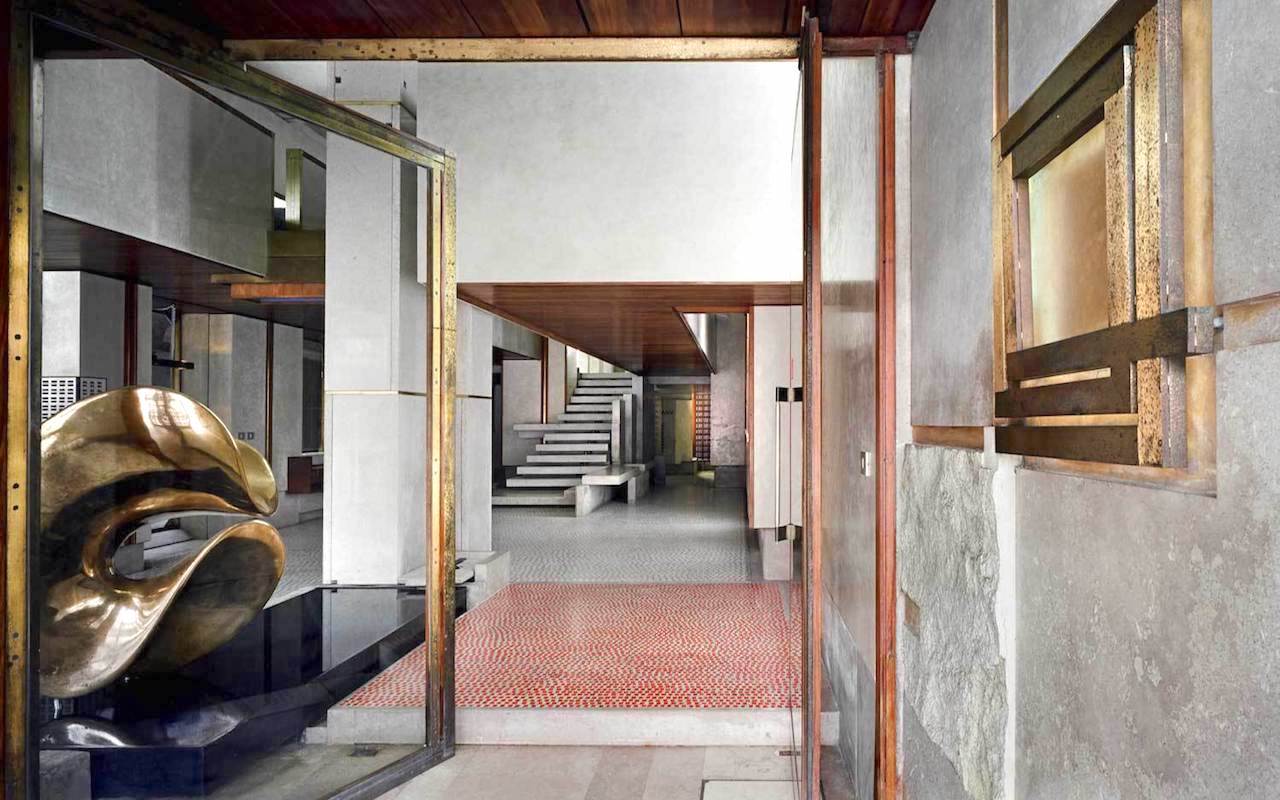
Discover The Hidden Venice With Carlo Scarpa Venezia Da Vivere

A Carlo Scarpa Guide To Venice Architecture Phaidon

Olivetti Showroom By Carlo Scarpa Venice
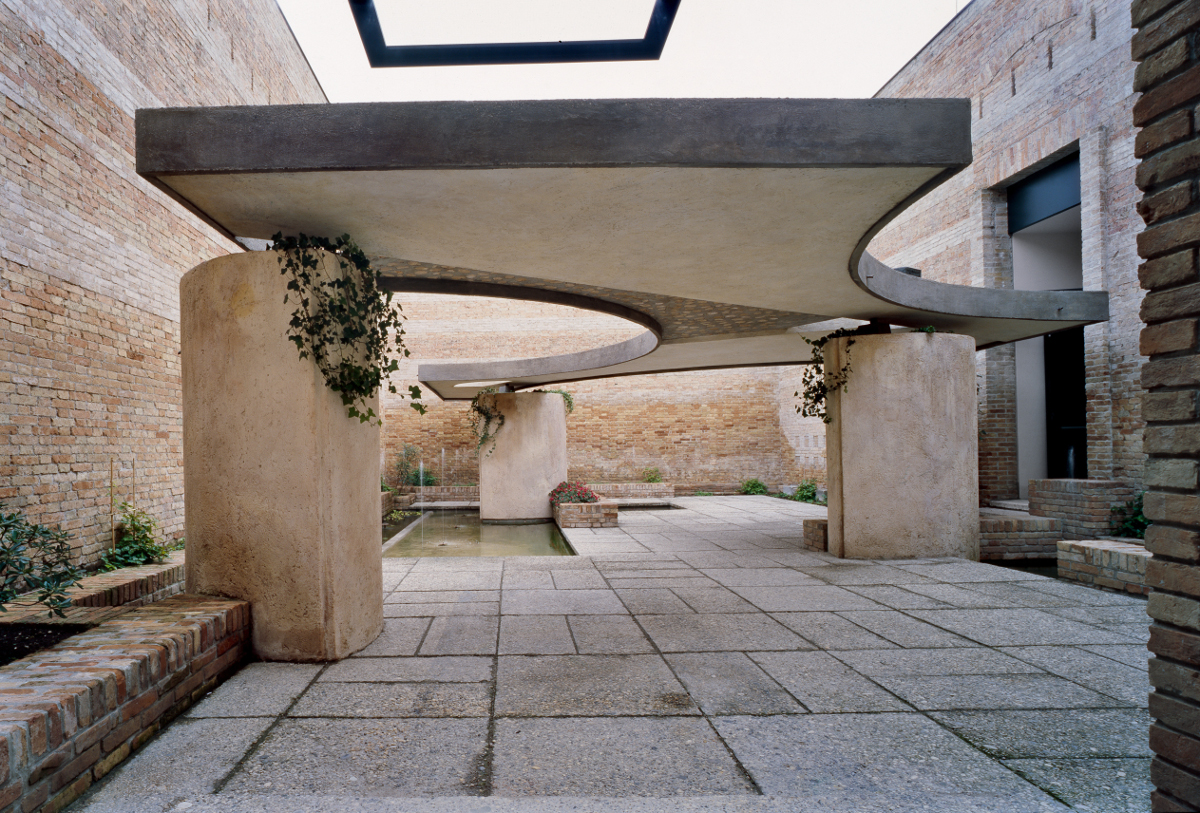
Finding Scarpa The Present Tense

Carlo Scarpa Mak Museum Vienna

Scarpa S Venice At Least Part Of It The Long Road To Venice

Jimmie Durham Objects Work And Tourism At Carlo Scarpa Area And Museum Fondazione Querini Stampalia Venice Mousse Magazine

Olivetti Showroom In Venice By Carlo Scarpa Yellowtrace

Maharam Story Carlo Scarpa Fondazione Querini Stampalia

Carlo Scarpa Art On Display 1949 69

Carlo Scarpa The Exhibition Design Of Palazzo Abatellis In Palermo 1953 54 Domus
Carlo Scarpa In Venice Archigardener

Italy S Lost Modernist Master The New York Times

Negozio Olivetti In Venice By Carlo Scarpa Archivibe

The Architecture Of Details Palazzo Querini Stampalia By Carlo Scarpa The Strength Of Architecture From 1998

Olivetti Showroom By Carlo Scarpa The Architects Take

Olivetti Showroom By Carlo Scarpa The Architects Take
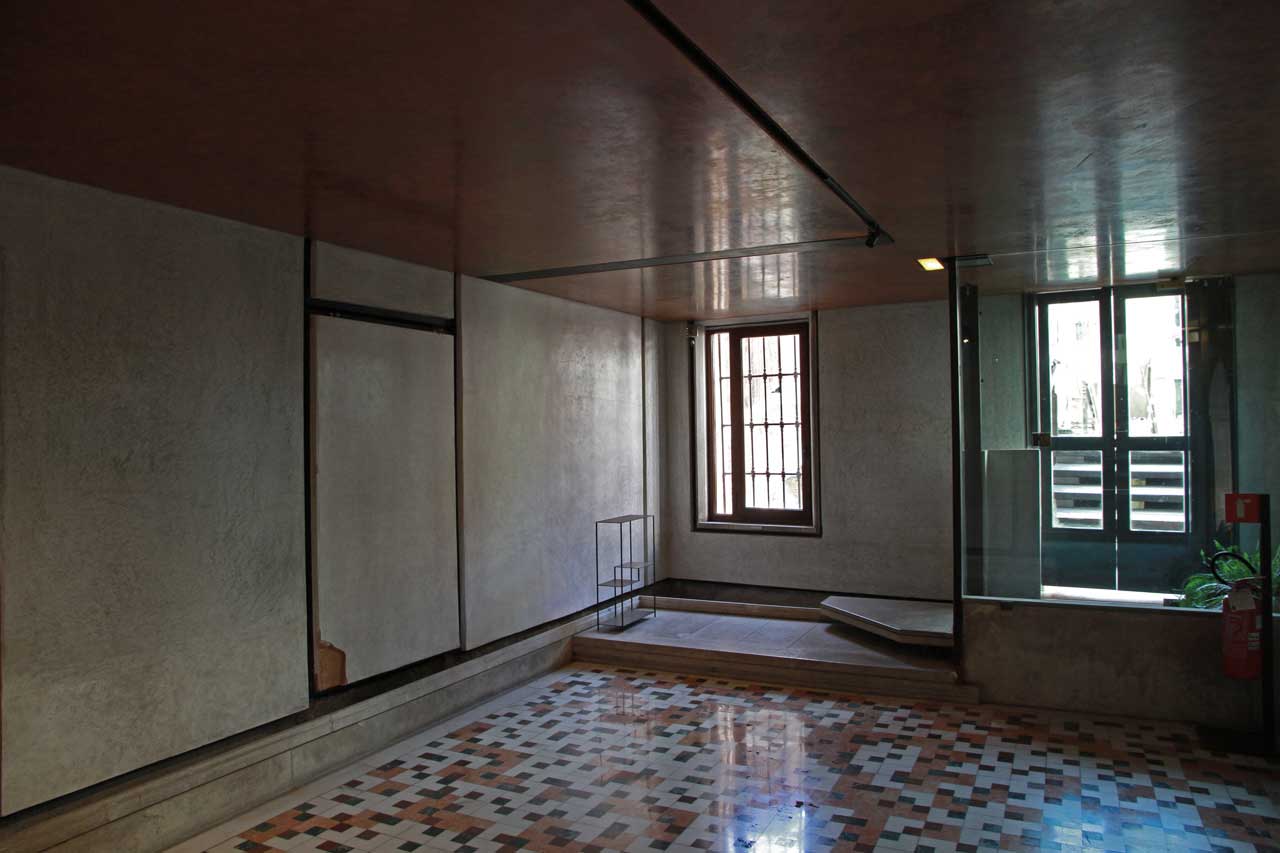
Museum Querini Stampalia Foundation By Carlo Scarpa Archiobjects

Dr Jason O Shaughnessy Castelvecchio Museum 1973 By Carlo Scarpa To Conjure Vitruvius Firmitas Utilitas Venustas Ccae March 17 18 Venice Field Work T Co E76zlb5zlt

Explore Venice In The Steps Of Carlo Scarpa The Venice Insider

Museum Querini Stampalia Foundation By Carlo Scarpa Archiobjects

Francesco Dal Co On Carlo Scarpa A Master Behind The Times Featured Articles Archileb Com

Carlo Scarpa Mario Botta Valeriano Pastor Riccardo De Cal Francesco Castagna Fondazione Querini Stampalia Divisare

Venetian Glass By Carlo Scarpa The Venini Company 1932 1947 Le Stanze Del Vetro
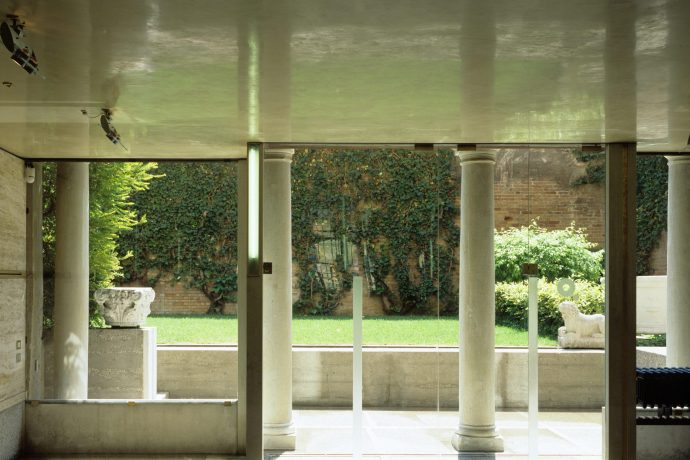
Carlo Scarpa Mario Botta And The 50 Year Renovation Of A Venetian Palace Museeum

The Olivetti Shop In Venice Carlo Scarpa Designapplause

Carlo Scarpa S Venetian Glassware For Venini Goes On Show At The Met In New York Wallpaper

Scarpa S Venice Museum Records The Changing Water Levels Of The Canal Leaving A Record Of The Past On The Wa Arquitectura Paisajista Arquitectura Arquitectos

Area Carlo Scarpa Venice 21 All You Need To Know Before You Go With Photos Tripadvisor

Olivetti And Doges How Carlo Scarpa Updated The Venetian Treasure Chest Design Observer

Carlo Scarpa Mario Botta And The 50 Year Renovation Of A Venetian Palace Museeum
Carlo Scarpa In Venice Archigardener

Expo Veneto A Charming Historic House In Venice Foundation Querini Stampalia And Its Museum

Querini Stampalia Museum Foundation Venice Tickets
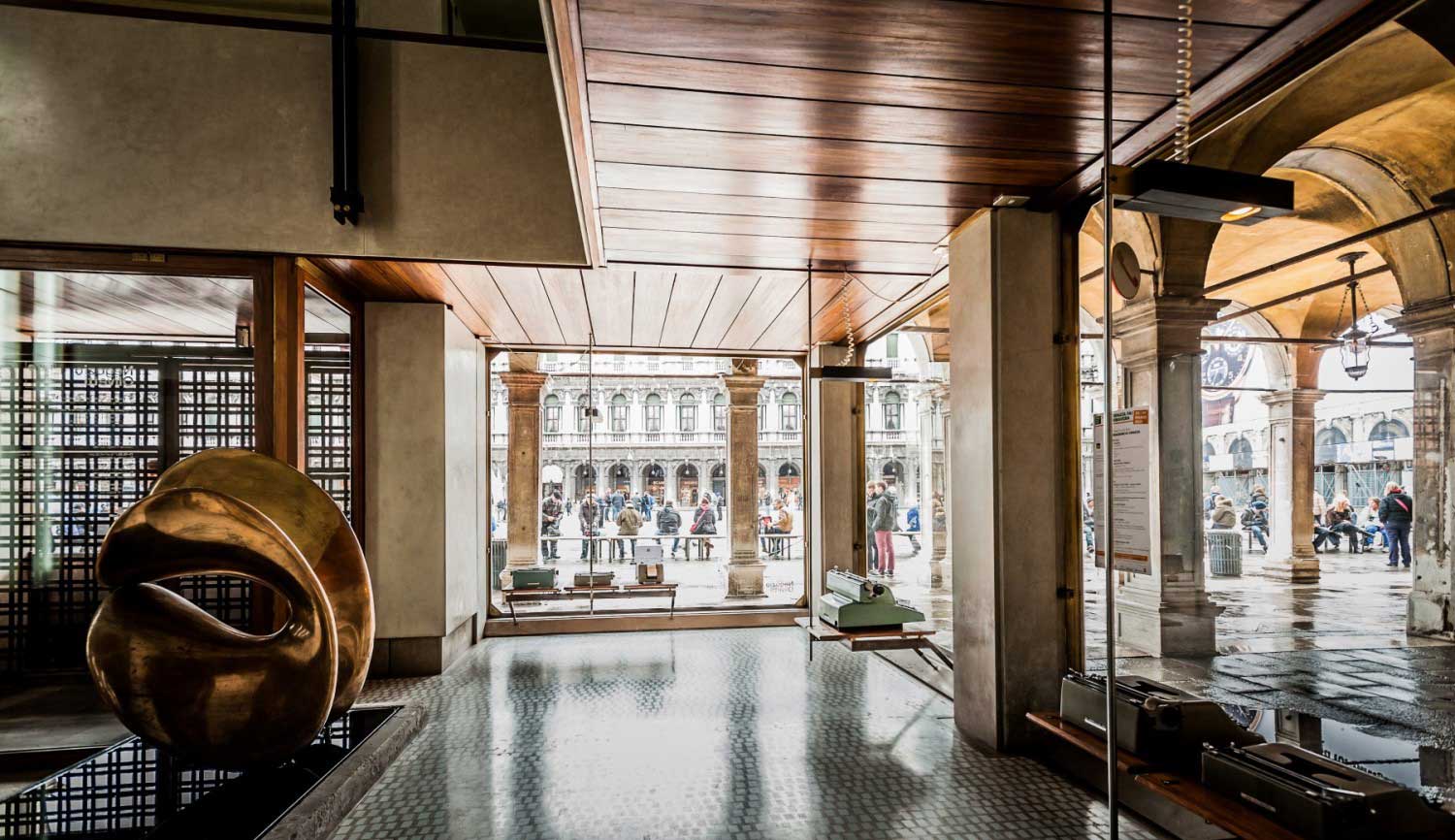
Carlo Scarpa Experience In Venice With Urban Italy

Carlo Scarpa Wikipedia

Museum Querini Stampalia Foundation By Carlo Scarpa Archiobjects
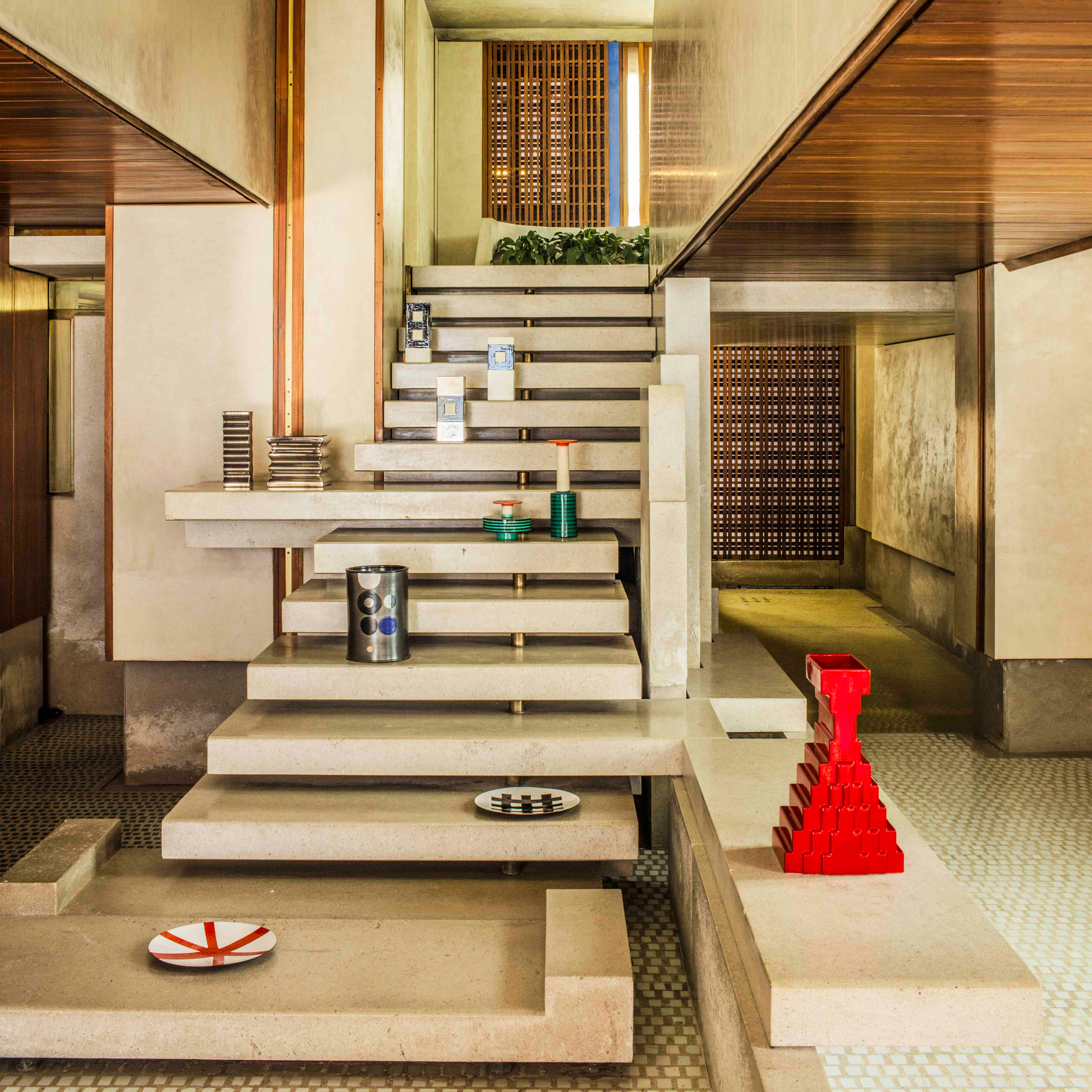
12 Must See Installations And Exhibitions At The Venice Art Biennale 17

Michael Cadwell On Carlo Scarpa S Architecture And Glassworks Artforum International

The Querini Stampalia Garden By Carlo Scarpa A Symbol Of Venice Best Venice Guides

Ad Classics Olivetti Showroom Carlo Scarpa Archdaily

Museum Querini Stampalia Foundation By Carlo Scarpa Archiobjects

Venetian Glass Designed By Italian Architect Carlo Scarpa On View At Metropolitan Museum Eat Love Savor

The Architecture Of Details Palazzo Querini Stampalia By Carlo Scarpa The Strength Of Architecture From 1998

Carlo Scarpa And The Restoration Of The Ground Floor Of Palazzo Querini Stampalia In Venice Best Venice Guides

A Carlo Scarpa Guide To Venice Architecture Phaidon

The Poetry Of Castelvecchio Design Architecture The Blogazine Contemporary Lifestyle Magazine

Carlo Scarpa Venice High Resolution Stock Photography And Images Alamy

Carlo Scarpa Wikipedia

The Places Of Carlo Scarpa In Venice 21

Carol Bove Carlo Scarpa Museum Dhondt Dhaenens Ghent Flash Art
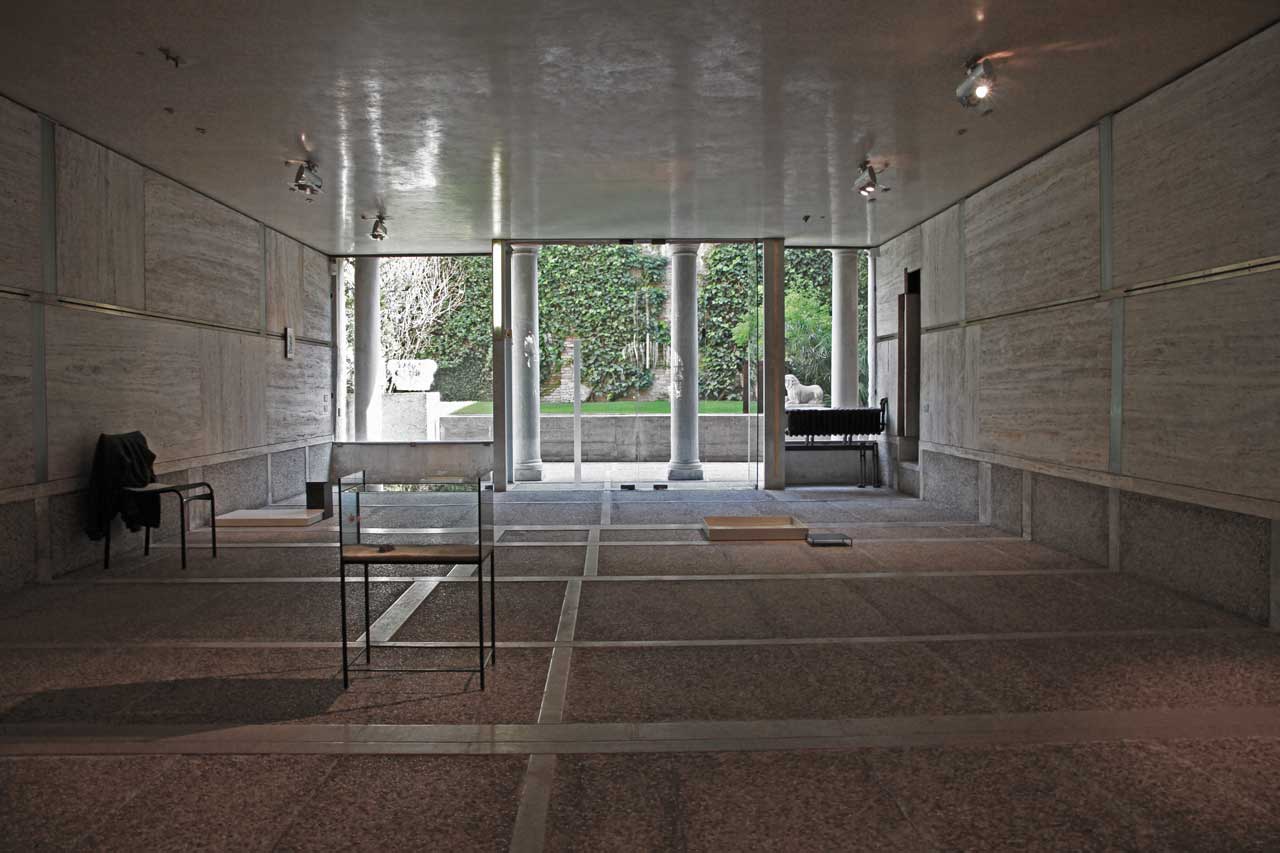
Museum Querini Stampalia Foundation By Carlo Scarpa Archiobjects

Restoration Of Castelvecchio Museum Atlante Architettura Contemporanea

A Carlo Scarpa Guide To Venice Architecture Phaidon

Carlo Scarpa Ed Il Racconto Di Castelvecchio Analisi Narratologica Della Galleria Delle Sculture Bricolo Famagazine Ricerche E Progetti Sull Architettura E La Citta

The Garden Of Carlo Scarpa In The Querini Stampalia Fondation In Venice

Sunday At The Met Venetian Glass By Carlo Scarpa The Venini Company 1932 1947 Youtube
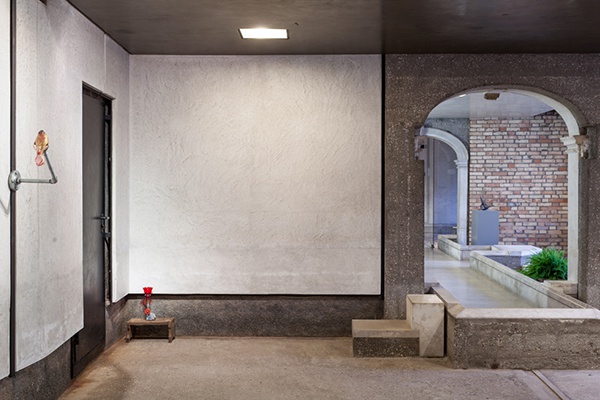
Jimmie Durham Objects Work And Tourism At Carlo Scarpa Area And Museum Fondazione Querini Stampalia Venice Mousse Magazine

The Renovation Of The Fondazione Querini Stampalia By Carlo Scarpa
Tattoos And Tombs Carlo Scarpa S Great Small Architecture Architect Magazine

Who Was Carlo Scarpa The New York Times

Itinerary On The Paths Of Architect Carlo Scarpa In Venice Where Italia
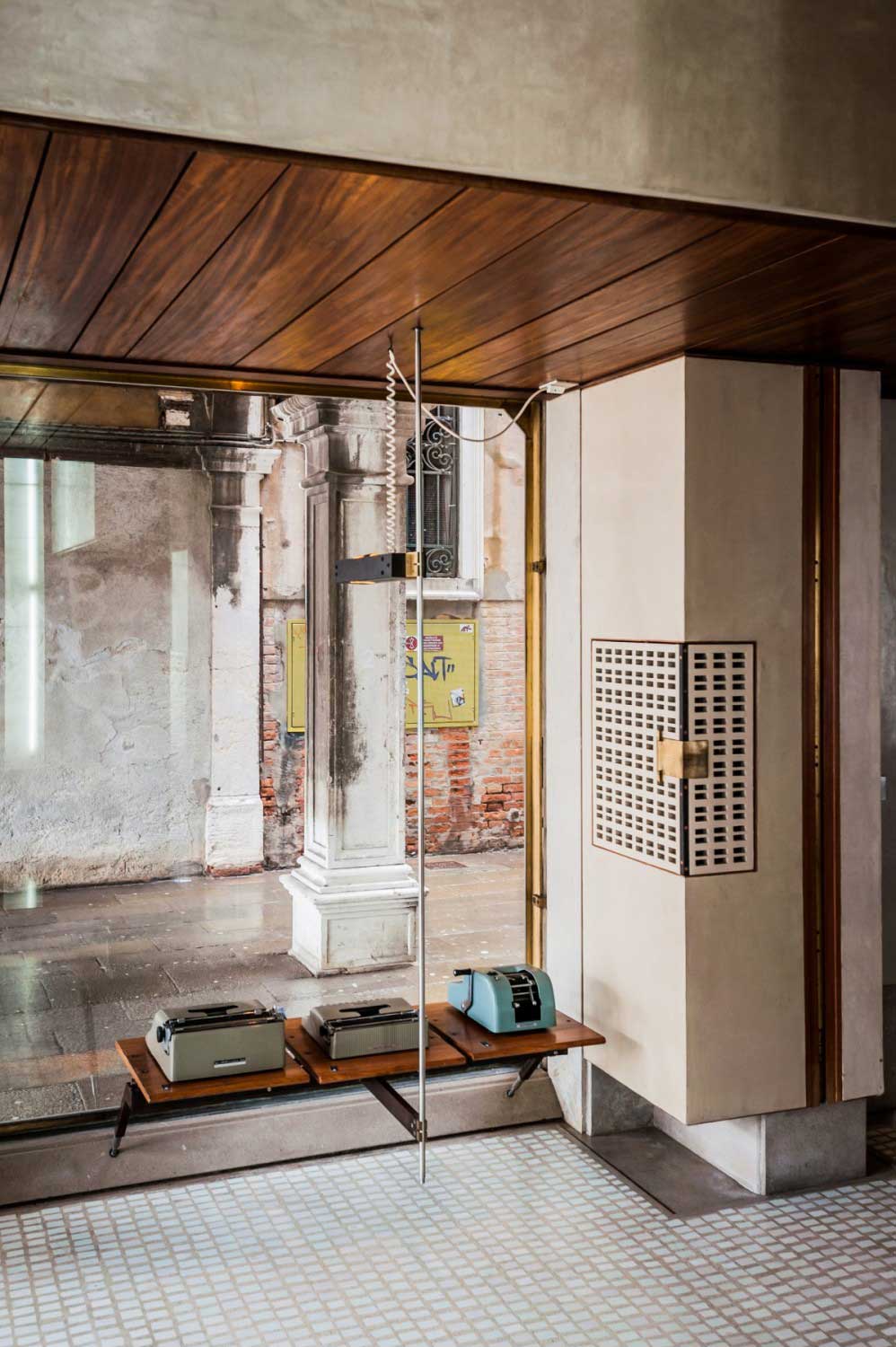
Olivetti Showroom In Venice By Carlo Scarpa Yellowtrace

Architect Carlo Scarpa 15 Iconic Projects Rtf Rethinking The Future

Itinerary On The Paths Of Architect Carlo Scarpa Where Venice
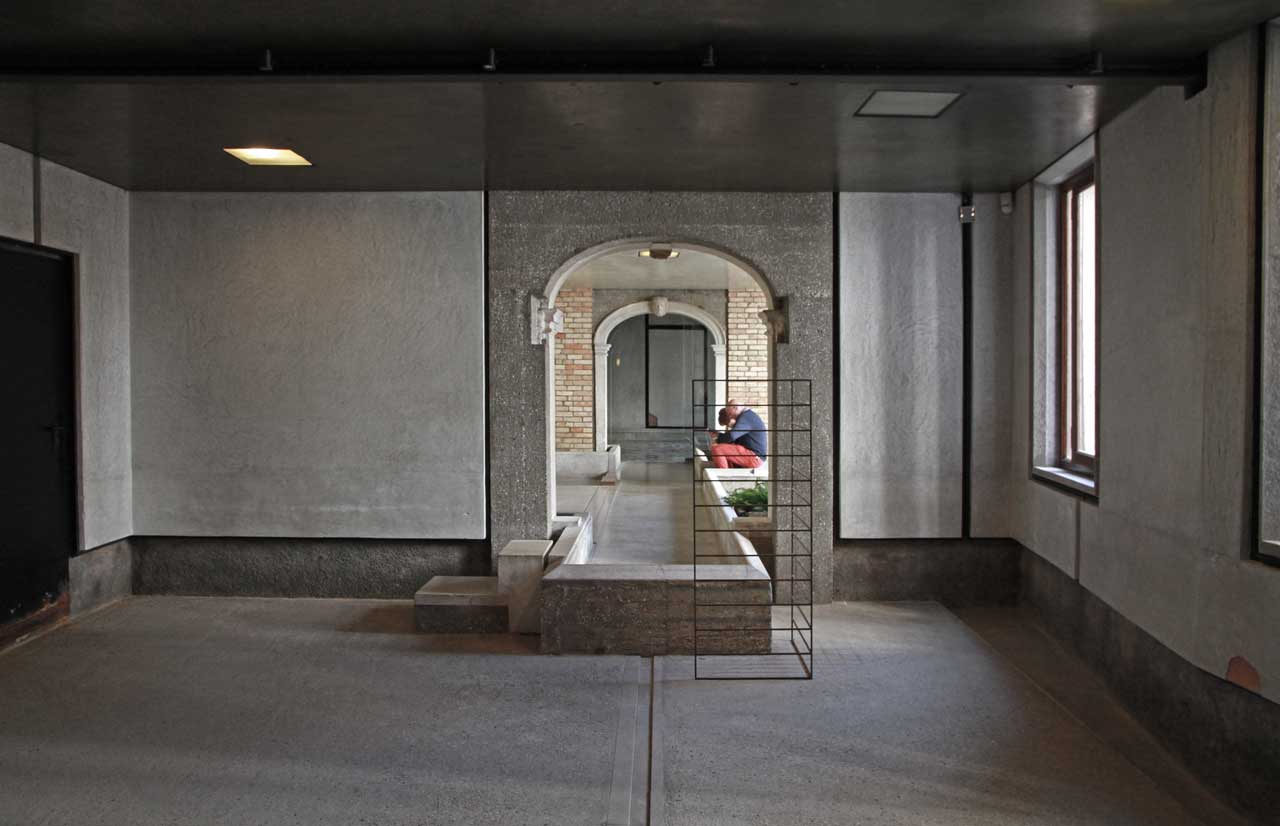
Museum Querini Stampalia Foundation By Carlo Scarpa Archiobjects

Carlo Scarpa Venezia Museum Querini Stampalia Foundation By Carlo Scarpa Carlo Scarpa Museum Foundation

Carlo Scarpa Gnixus

Tolentini Convent In Venice Door By Carlo Scarpa

Itinerary On The Paths Of Architect Carlo Scarpa Where Venice

Arcdog Arcdog Film Fondazione Querini Stampalia I Carlo Scarpa Image C Arcdog Fondazione Querinistampalia Fondazionequerinistampalia Carloscarpa Scarpa Venice Italy Venezia Art Museum Door Arcdogfilm Architecture Architect

Pin By Kkask On Museum Venice Carlo Scarpa Exhibition Design

Carlo Scarpa Museo Canoviana Possagno Opus 22 Series Opus 22 Buzas Stefan Arthur Judith Amazon Com Books




